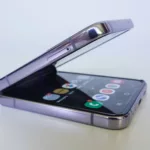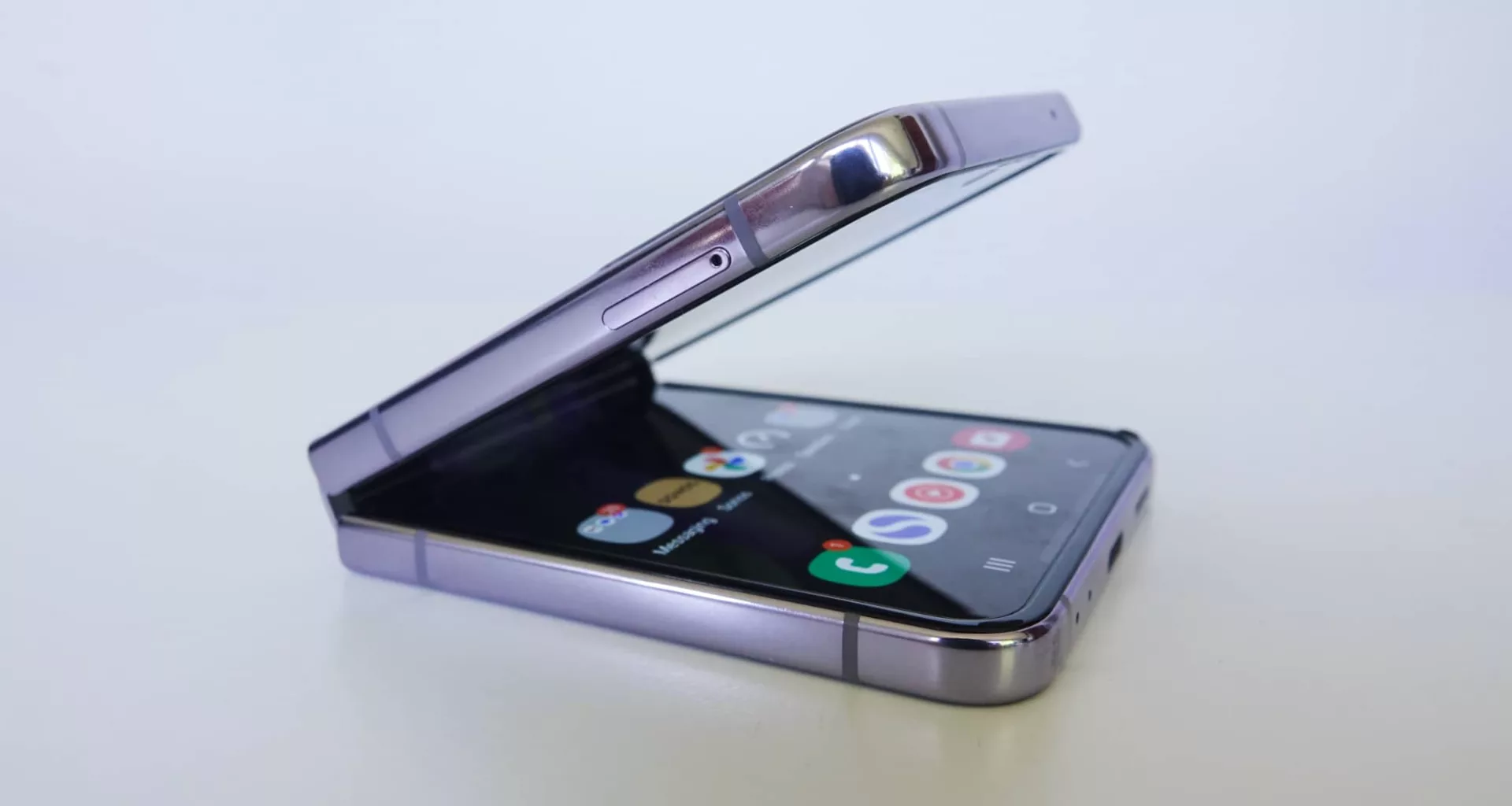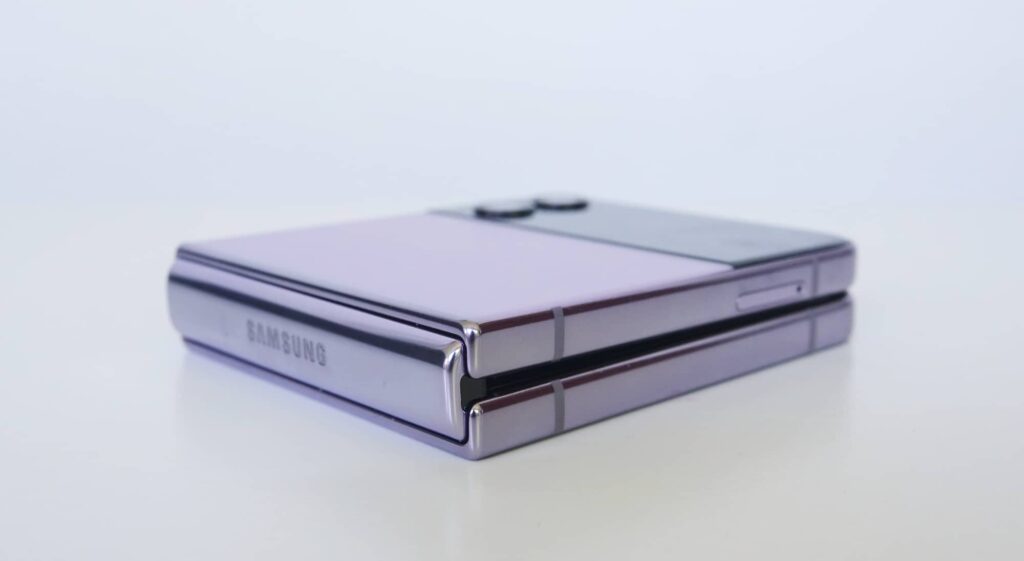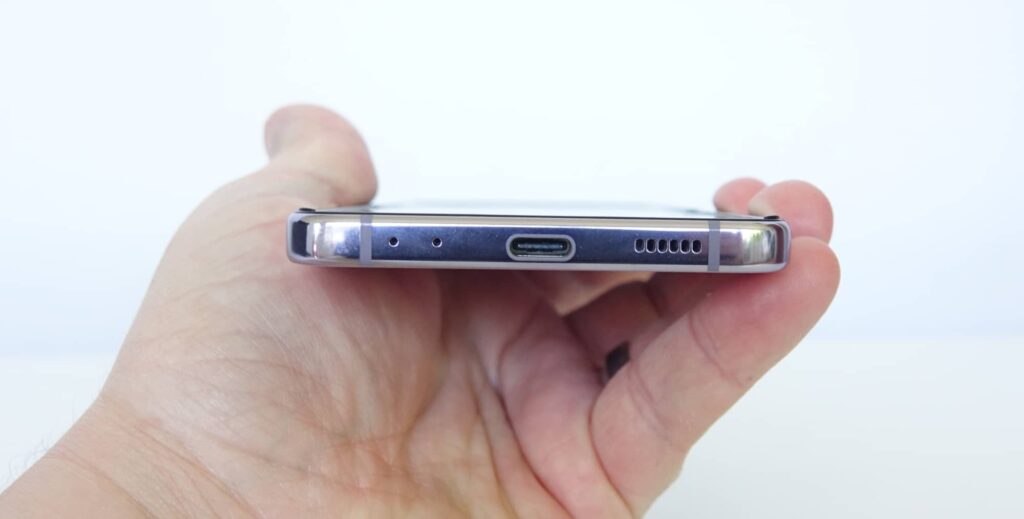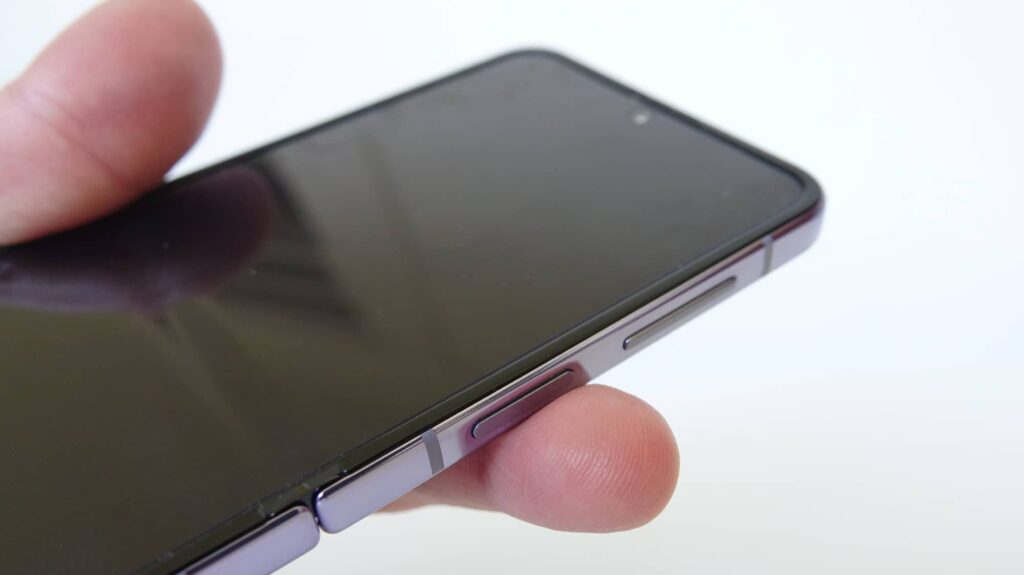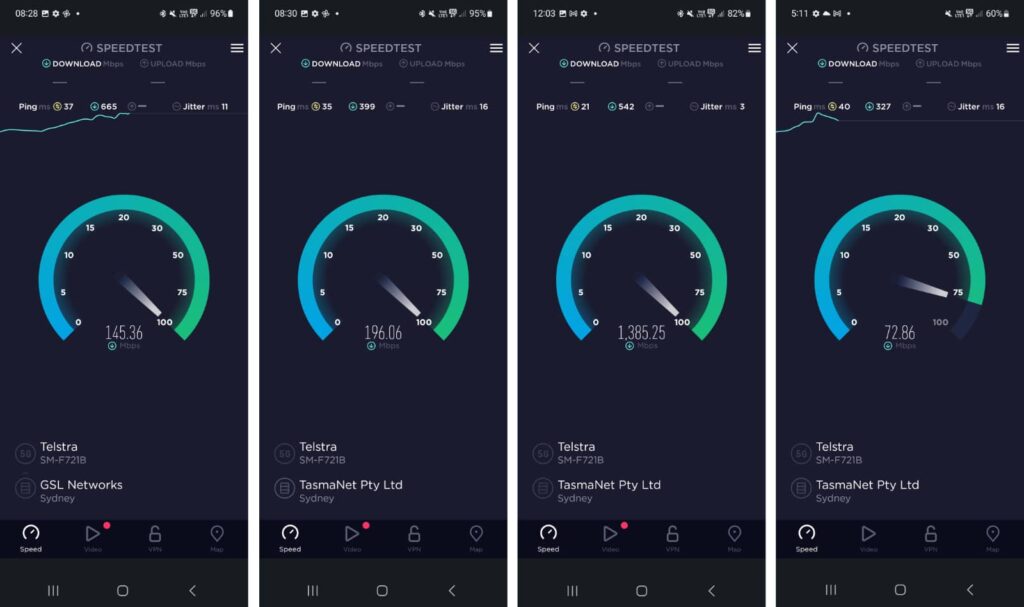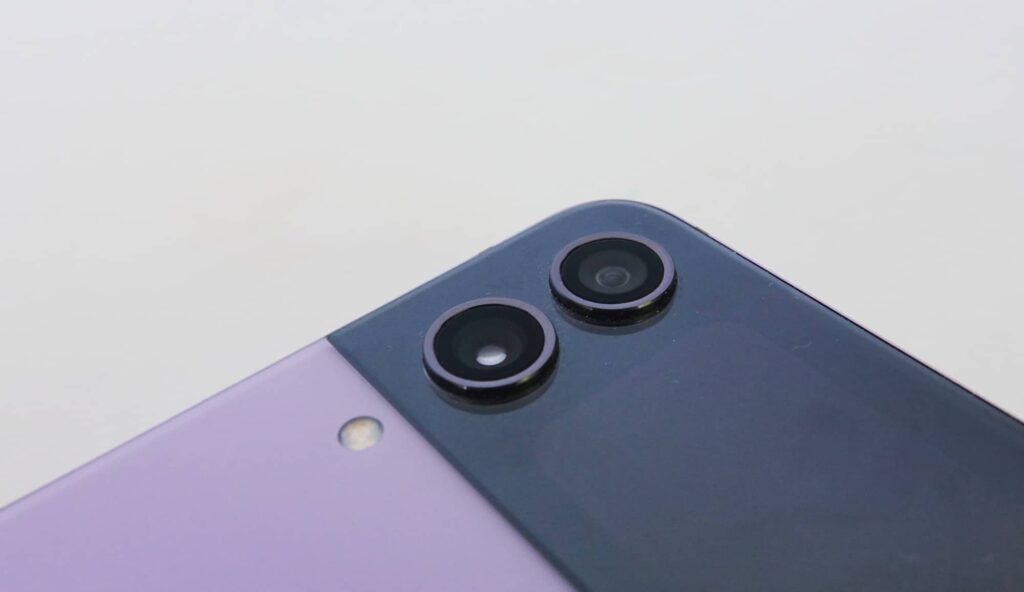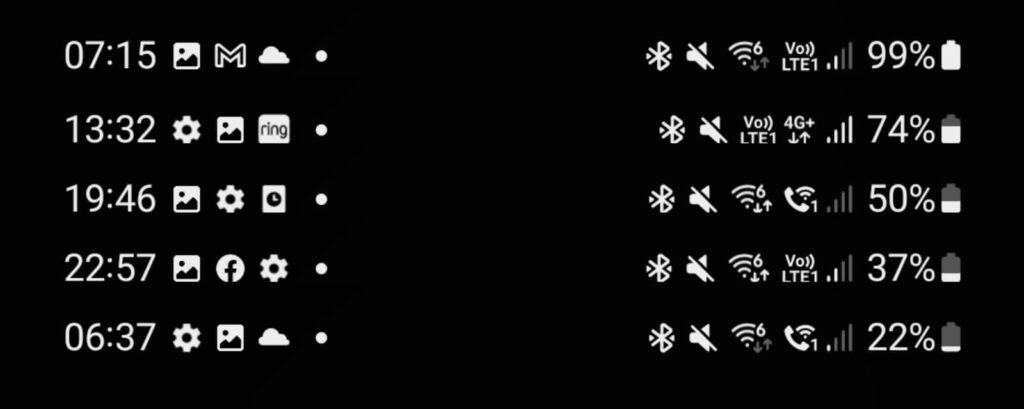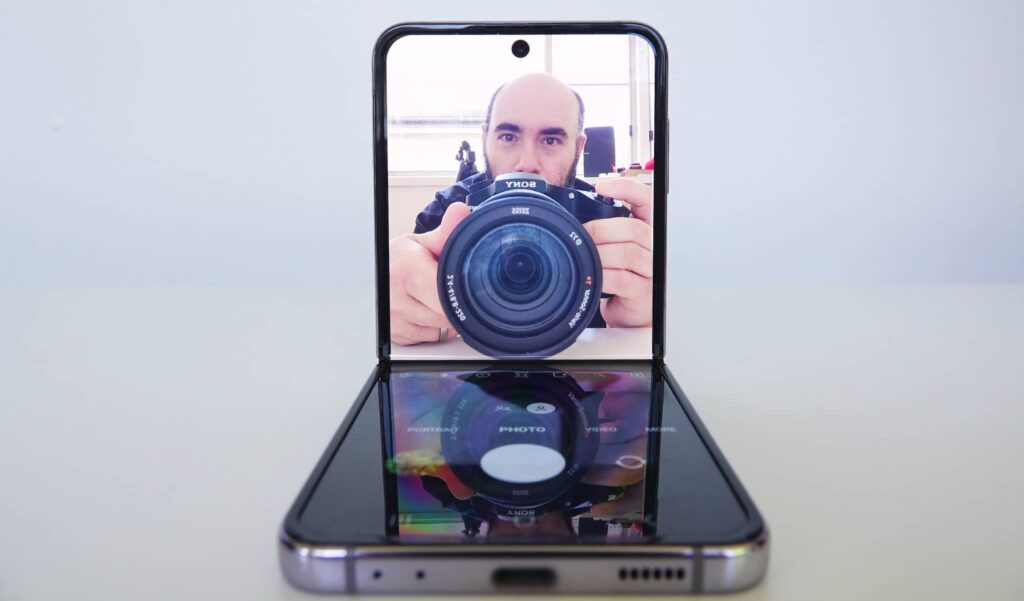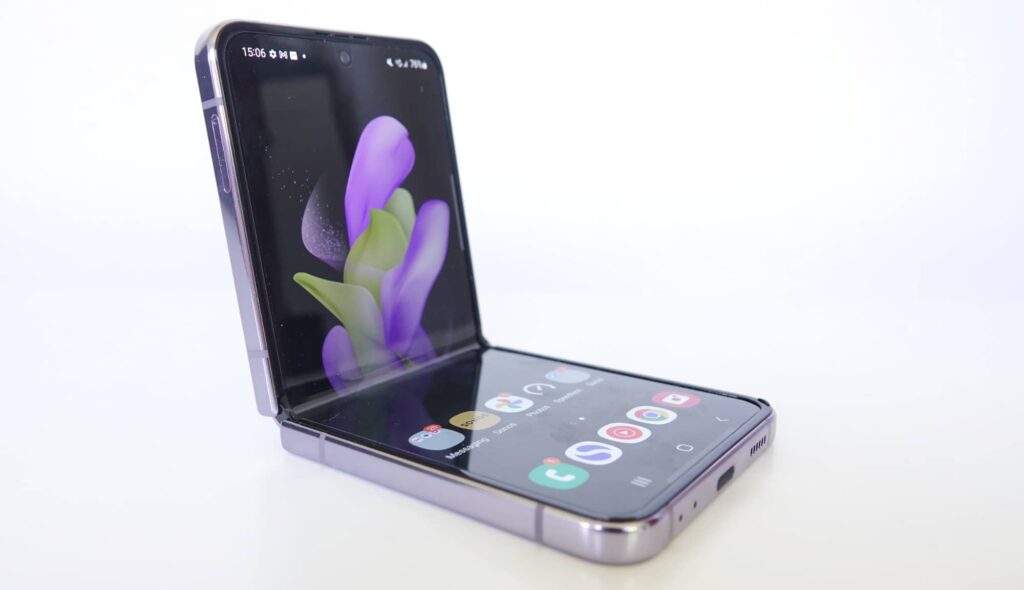Quick review
The good
The not-so-good
Round four of Samsung’s compact flip phone reveals a few updates, but by and large a minor refresh, as the Galaxy Z Flip 4 updates the battery and specs, and not much else.
Design
The age of flip phones may well seem like a past tense thing, but Samsung is bringing it back. Initially something Motorola looked fit to return with its foldable Razr, and while we’ve not seen one of those for a while, another is finally on the horizon. However it’s not just Moto, as Samsung looks to keep the flip phone mantle going with its own foldable phone, coming in the next in line for the Flip series.
There was an original option and then a 5G model of the same, and last year, we saw version three, which updated the spec sheet and design to make it just that little bit better.
This year in version four, things don’t look that much different, offering another two tone colour scheme with a slightly improved frame and design. It’s very much last year’s foldable screen flip phone design made new, because, well, it’s a new year.
Features
It’s not just a new design, though, because Samsung has loaded up the spec sheet to be pretty high, managing even a more impressive spec list than what any of its S22 models received earlier in the year. Because it’s the back half of the year, you’ll find a new chip found in this back half, as the Snapdragon 8 Gen 1 jumps to the Snapdragon 8+ Gen 1, a small difference, but one to be sure.
That’ll cover CPU and GPU, but there’s also 8GB RAM and a choice of either 128GB, 256GB, or 512GB storage in the phone, though choose at the beginning because there’s no microSD slot to expand on that.
You’ll also find two cameras on the outside here, both set to 12 megapixels and offering wide and ultra-wide angles, while the inside camera is a 10 megapixel camera set as a hole punch inside the screen.
Connections are fairly normal for a flagship phone today, meaning they’re relatively limited on physical, but varied on wireless. As such, there’s only one physical connection, with Type C USB at the bottom, while wireless on the Z Flip 4 is catered for with Bluetooth 5.2, 802.11a/b/g/n/ac/ax WiFi 6, Near-Field Communication (NFC) for Google Pay, GPS, and 5G with support for older mobile technologies, as well.
All of this sits in a body that technically offers two screens, with a tiny 1.9 inch info-only 260×512 sub-display on the outside, while the main display on the inside if a 120Hz AMOLED display measuring 6.7 inches and running the resolution of 2640×1080, also known as Full HD+. This screen is also one of the main stars of the design, because it folds up.
It all comes in a flip-style phone measuring 17.1mm thick when closed and 6.9mm thick when opened, made from a combination of aluminium, plastic, and glass, and sports an IPX8 water resistance rating.
The battery in the Galaxy Z Flip 4 is rated for 3700mAh and is not removable, but can be charged over both Type C USB and wireless charging.
There’s also a fingerprint sensor built into the power button on the right edge.
All that’s left is to try it, so switch it on with that button, and wait for the phone to spring to action, which it does pretty quickly.
In-use
Samsung’s take on the foldable flip phone in its fourth generation (kinda) hasn’t seen a dramatic departure from what we saw last time, so get ready for more of the same. And that’s not a bad thing.
It’s a big phone made small-ish, thanks to a foldable screen and a relatively thick hinge, and while it doesn’t quite offer the firm snap of an old flip phone, it’s still a great design taking a big screen and making it far, far more pocketable than the typical big phones display.
These days, everything is a big phone, so making a big phone small is all kinds of cool.
It also means using the phone is made a little easier, because you can fit it in one hand and get use out of it, and Samsung has kept that solid in the fourth version.
Much like the previous models, the use of the fingerprint sensor in the side-mounted power button is also a help, because you can quickly bring it out of standby simply from gripping the side of the phone.
As with Samsung’s other phones, you’ll also find Android on the phone, with Android 12 fresh from the box. We’re not sure when version 13 will rock up, but it’ll hopefully be soon, and likely with Samsung’s One UI, which has improved drastically over the past few years, making it easy for beginners and experienced Android folks alike.
Performance
Armed with one of the latest chips in the industry, the Z Flip 4 proves that small doesn’t need to be underpowered. In fact, it’s the exact opposite of that, wielding more power than that of its high-priced flagship siblings from earlier in the year, including the Galaxy S22 Ultra.
The chip inside the Z Flip 4 is none other than the Qualcomm Snapdragon 8+ Gen 1, the slight improvement on the regular 8 Gen 1 used in S22 phones earlier this year, and the same chip found in the high-end Asus ROG Phone 6 Pro, no less. With all that in mind, you probably won’t be surprised at the performance of this phone.
The differences may seem small, but there's more grunt in both the CPU and GPU, as the Flip 4 beats the S22 Ultra's performance.
It should be a similar situation with regards to 5G, with high speeds on offer provided your mobile network doesn't let you down at the time. In fact, in our tests, we found speeds as high as 1Gbps were possible on the Z Flip 4, sending a good sign that you should get some solid speeds here.
It goes without saying that your mileage may vary, and a mixture of factors could leave you with super slick high-speed mobile broadband, or middling performance barely suitable for a decent upload. But the hardware is definitely here in this phone to give you some solid speed from the tech inside.
Camera
One area that won't seem all that different, at least upon first glance, is the camera, which still offers two cameras on the back, next to that tiny screen on the outside. The cameras available to you cover 12 megapixel for both the wide and ultra-wide, really giving you marginally updated equivalents of the cameras in last year's model, but that's it.
In terms of capability, we found the daylight shots from the Z Flip 4 were nice, offering sharp and crisp images with decent colour, while low-light was acceptable but not super amazing.
You won't find the swanky macro modes available on other ultra-wide cameras here, nor will you see an 8K video mode, topping out at 4K Ultra HD in the Z Flip 4. Both of those are possibly signs of the compromises Samsung has had to make getting the tech small, but it was the same result last year, and makes us wonder what changes Samsung has made. If anything, they're small, and not the sort of thing most will really worry about.
It's a similar situation on the front, where the camera is still 10 megapixels without auto-focus, as the Z Flip 4 misses out on some of the cool front-facing auto-focus camera tech Apple introduced on its iPhone 14.
The most you'll really find here is a marginal improvement to the image quality, but nothing mind-blowingly amazing. A slight update here and there, but not the camera feature set you can find on Samsung's other devices, and given the premium foldable screens come with, that's a surprise.
Battery
In a similar vein, the battery life changes range from a slight improvement to a whole lot better and much more usable.
On one battery test with the Z Flip 4, we found a little more life than we found on the previous Flip 3, but still needed a charge by the time the day was done. No worries.
Another proved to be different entirely, with a regular day of activity making it through past 24 hours and with a little left over for the next day. That's the sort of life that feels like a genuine upgrade over last year that is truly usable for most people.
Repeated testing showed that your mileage may vary -- one test showed a drop of 16 percent doing nothing but having the phone unplugged overnight! -- but it all seems to suggest the Flip 4 is a one-day phone.
Given the 3700mAh battery size inside the phone, we're not totally surprised, but if you needed to, you could get a little more life out of the handset.
Alternatively, you could just make sure that you're within reach of a Type C charger, set to be a standard in the EU, or even a wireless charger, since the Flip 4 supports that technology, as well.
Value
But it's still expensive, and you're paying for the foldable technology for sure.
Priced in Australia from $1499 for a 128GB model or as much as $1849 for the 512GB variant, the Galaxy Z Flip 4 isn't so expensive that it's impossibly priced, but for what you're getting outside of that foldable bendy screen, you may raise your eyebrows a bit.
Very similar to last year's Flip 3 except with a change to the chip, camera, and battery life, the Flip 4 doesn't feel like a $1500 phone. It comes at a premium because the technology is strong, but it's not a leap ahead of what Samsung offered last year. It feels quite close, actually.
It's hard to actually call the Flip 4 a massive improvement... because it's not. It's last year's phone in a new generation, with a new chip and a slightly improved camera, and even a marginally more durable frame and body... but that's it.
Much like how the iPhone 14 can be seen as a slightly more expensive marginally updated take on the iPhone 13 before it, the Z Flip 4 feels like a minor refresh on the Z Flip 3 before it. Yes, it's a new phone, but we're not sure if it's one that deals with its new price tag all that well.
What needs work?
In fact, for what you pay, the minimal upgrades seem just that: minimal.
Yes, the design is slightly more durable and sure, the chip is faster, now that we're using the very best Qualcomm Snapdragon chip 2022 has to offer.
But the camera is still just two modules, offering wide and ultra wide, and you'll miss out on the minor amount of telescopic lenses even the S22 standard offers.
We also found the antenna could be hit and miss, and mobile reception wasn't always perfect, but for the most part, our issues with the Z Flip 4 are with the updates, or more specifically, the lack of them. It's not much of an update this year, with most of the refinements dealing with last year's mediocre battery, but that is largely it.
It means the Z Flip 4 doesn't feel like much of an upgrade, and is beginning to feel like it's lagging behind where its price is pitched. The $1500 minimum mark seems like it should get you three cameras, and yet doesn't here. You're getting a good phone, sure, but you're still largely paying a premium for that foldable screen.
Final thoughts (TLDR)
In its fourth version, Samsung's Flip is evolving nicely, although also a little slowly. Last year's Flip 3 was pretty solid minus the battery life that this year, all Samsung really had to do was fix the battery, update the specs, and deliver a better camera for version four. And it only really did some of that.
Samsung fixed the battery, it updated the specs, but the camera experience hasn't changed, and it still feels under what the company can offer. The camera in the Flip 4 could easily be better, and that's a bit of a pain point.
The counter argument to this whole thing is that Apple does something similar, and that's fair, but Samsung can do better. Even Samsung's lowest point of the flagship S22 range, the S22 itself, offers three cameras, making that main point of difference being a cross between size and a foldable screen, and it's hard not to feel that you're mostly paying for the foldable screen technology.
From where we sit, the Flip 4 is still a great choice, but less of a recommendation this year. It's still a great phone, but not much of an update. It's still a pocketable phone, but Samsung can do better, and in version five, we're hoping it does.
